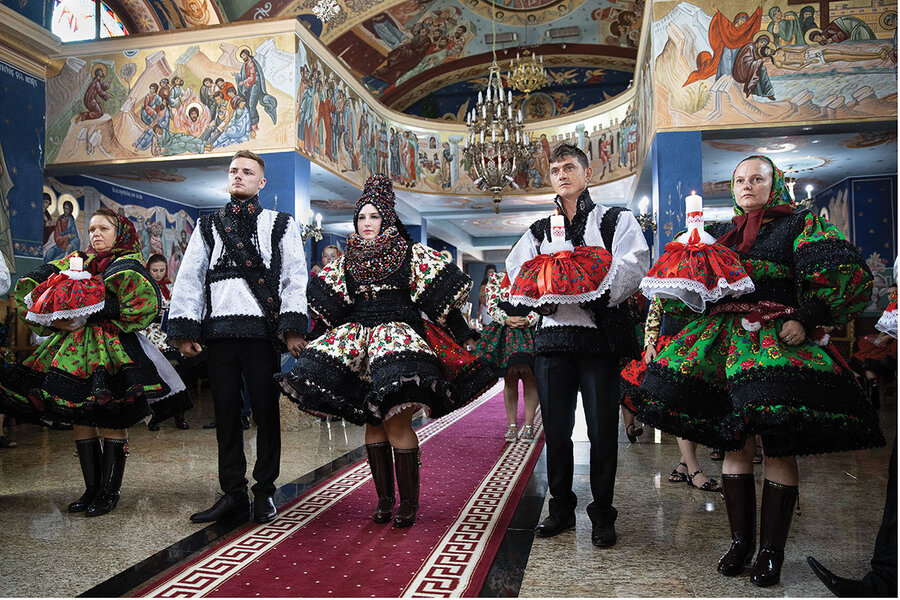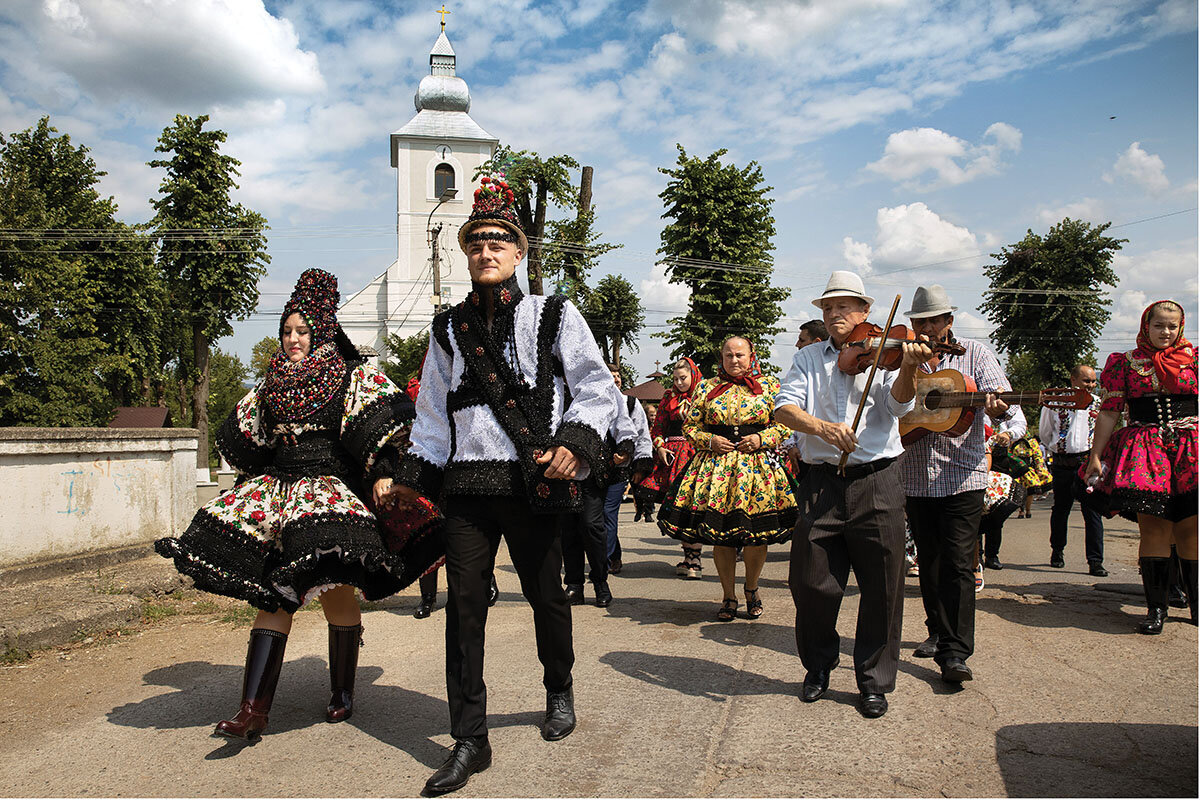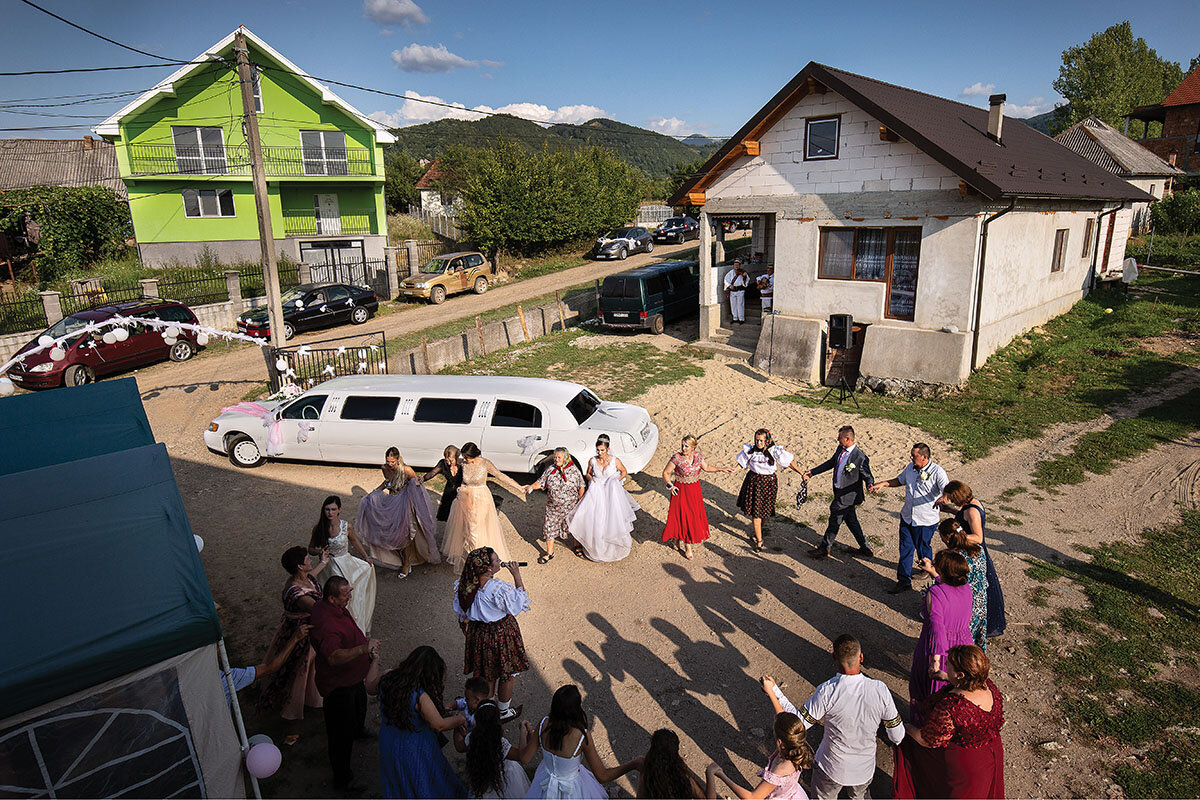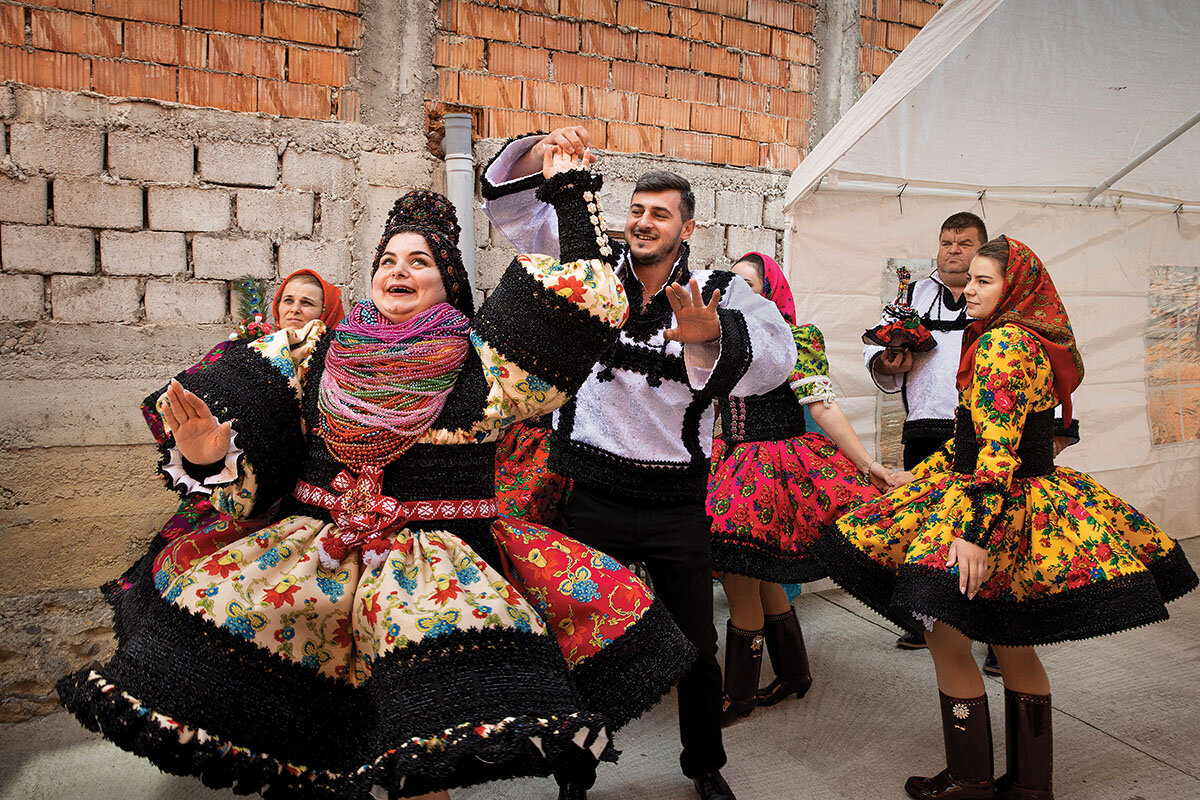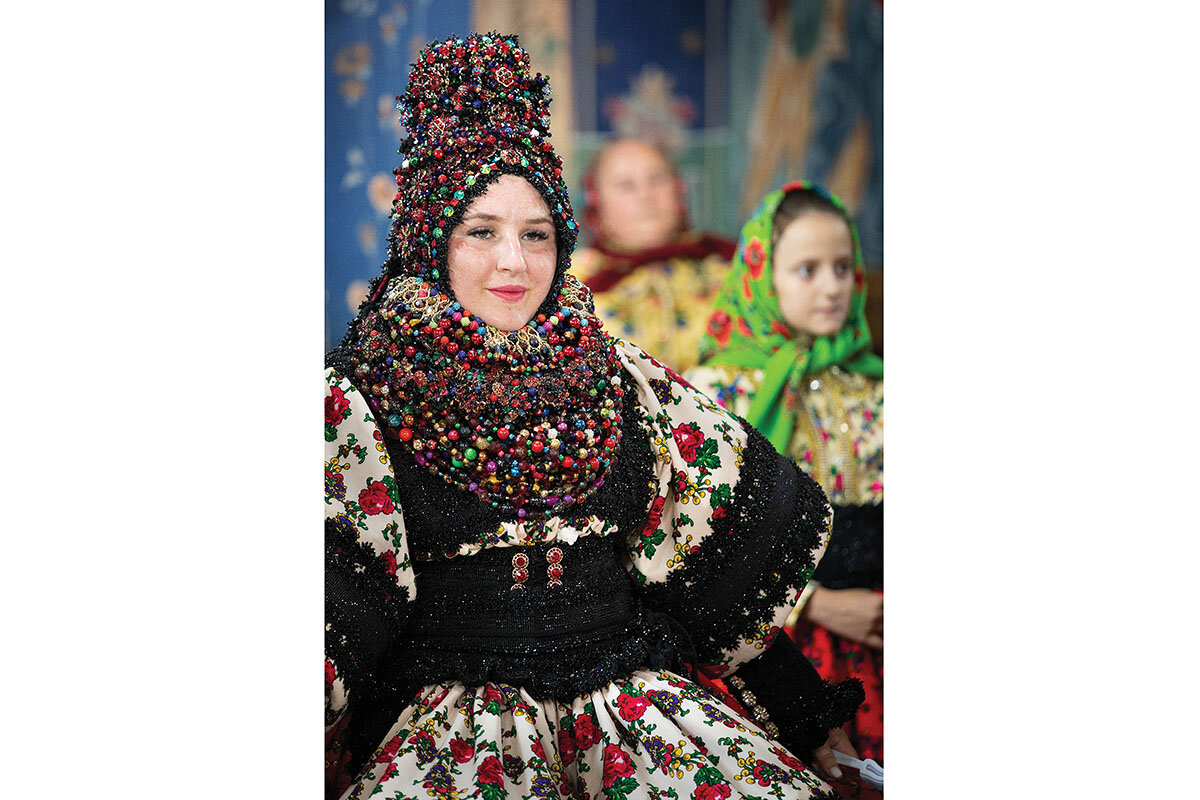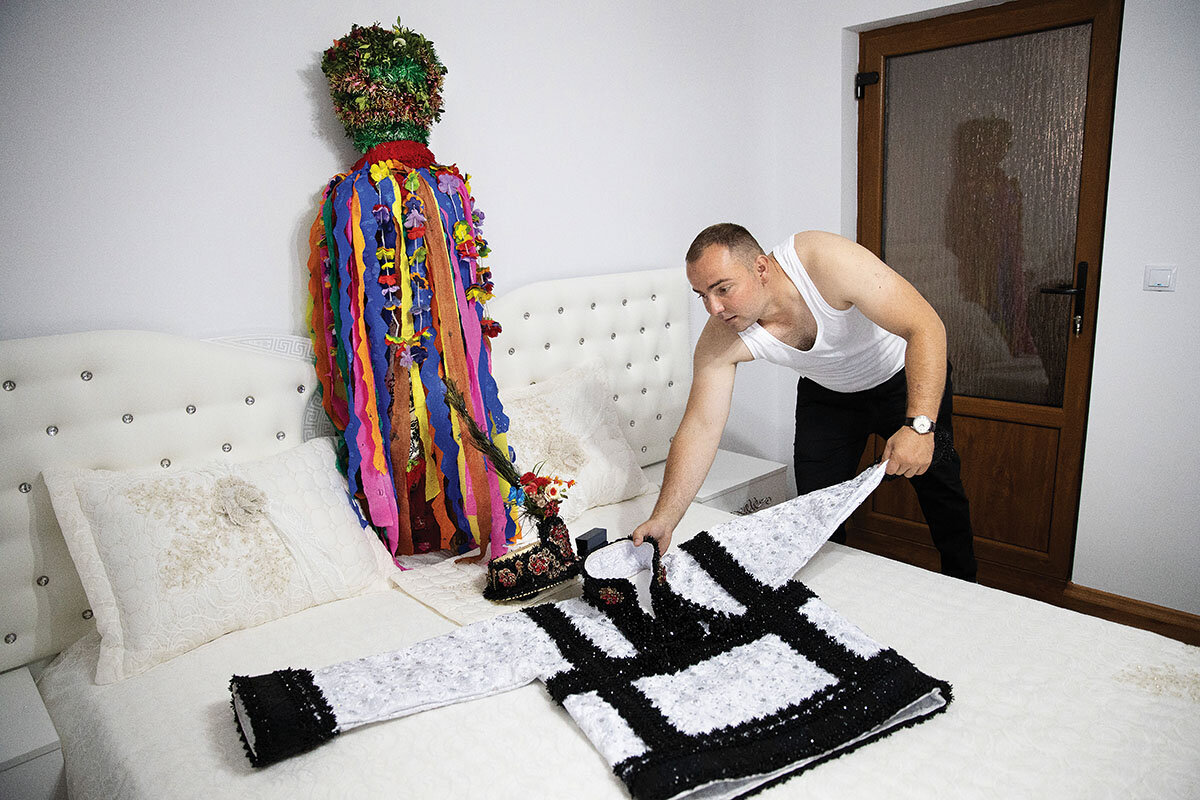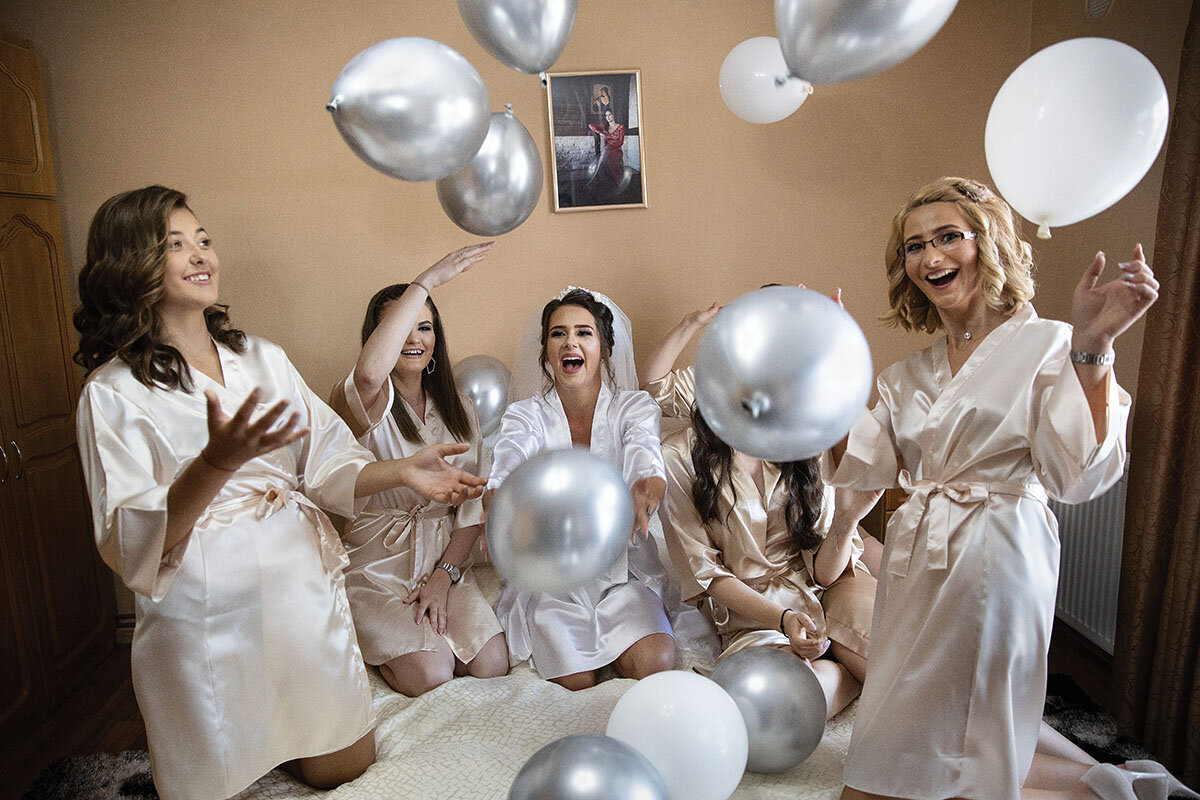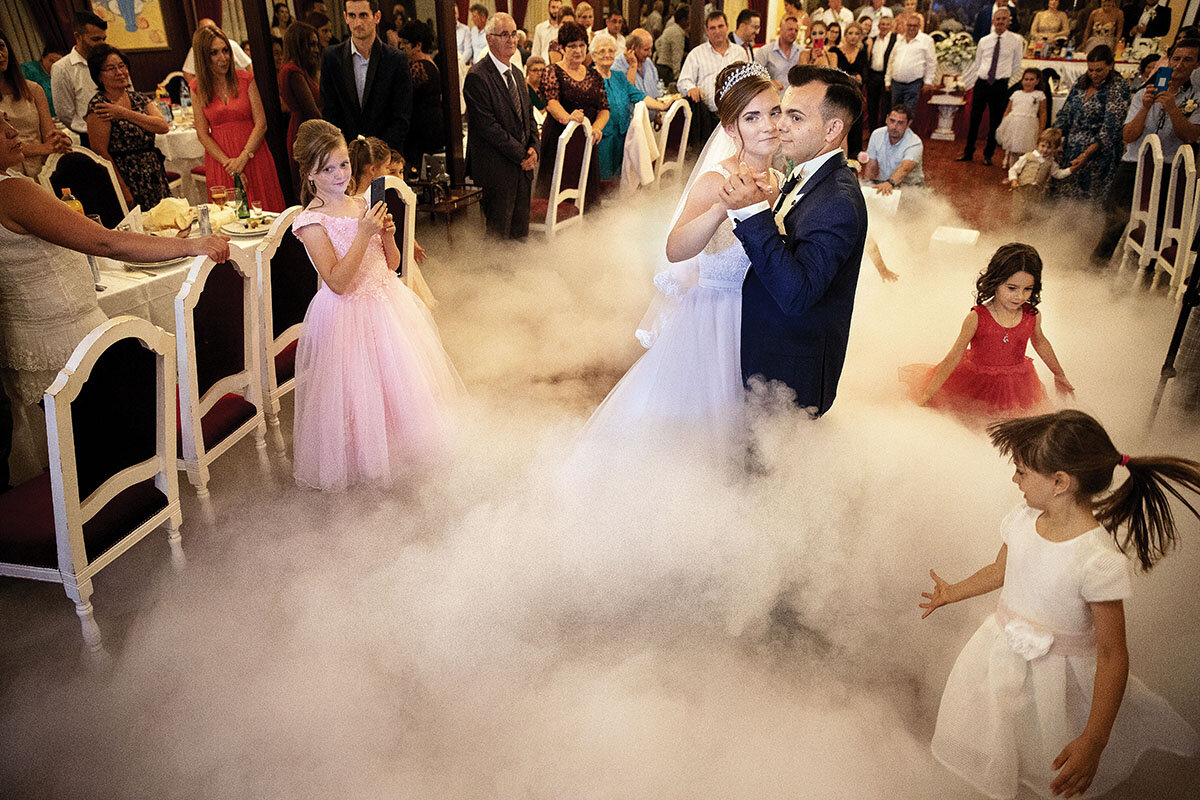In Pictures: In Romania, ancestral villages swell each wedding season
Loading...
| Negreşti-Oaş, Romania
In a remote region in northern Romania, the summer heat ushers in the warmth of homecoming. Eleven months of the year residents of the Oaş region work in western Europe, but in mid-August they return to their native villages, on the border with Ukraine and about an hour’s drive from Hungary, to celebrate the wedding season.
Neither COVID-19 nor Russia’s invasion of Ukraine has disrupted the festivities, which are planned years ahead.
Weddings in Oaş are attended by hundreds, sometimes even a thousand people. There’s a remarkable mixture of tradition and wealth. Guests dress in Romanian folk costumes or the latest Paris fashions, eat delicacies, and dance in dry ice fog.
Why We Wrote This
Keeping strong ties to family and friends back home ensures community and continuity. Gathering for celebrations such as weddings enhances a shared sense of identity.
Every detail is recorded meticulously by photographers. “Elsewhere in Romania people are happy to have the wedding edited down to a short film, but in Oaş we make roughly five-hour movies,” says Claudia Simon, a videographer.
No expense is spared. Limousines shuttle between villages, cosmeticians and hairdressers work to the brink of exhaustion, flower shops make endless bouquets, and musicians play until dawn.
In some cases, wedding customs are passed down through the generations.
“I learned how to prepare brides from my mother and grandmother, and nobody else knows how to do it,” says Maria Cont, as she braids locks of hair into something resembling elephant ears. Later, Ms. Cont will sew decorated ribbons into the updo.
After the summer wedding season – filled with the constant buzz of preparations, ceremonies, music, and dancing – life in the hills of northern Romania returns to its tranquil patterns.
“Seventy percent of the locals work abroad,” says Remus Tiplea, a photographer. “Most of the year you don’t even have anyone to talk to here.”




